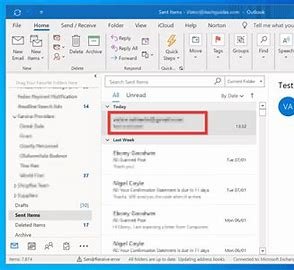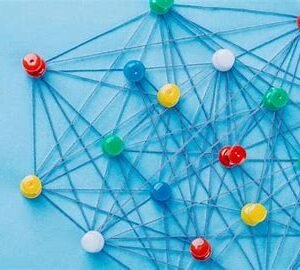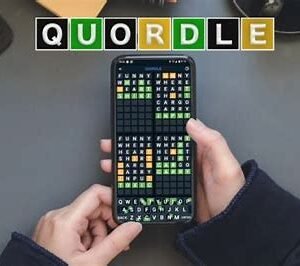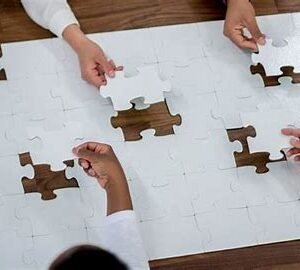The New York Times’ Connections puzzle has become a daily brainteaser for word enthusiasts worldwide. The seemingly simple format – four seemingly unrelated words with a hidden NYT connections – challenges players to think outside the box and find the thematic link that binds them all.
But what if you get stuck? Fear not, fellow puzzlers! This article delves into the world of NYT Connections answers, exploring strategies to solve the puzzles, common themes used, and where to find helpful resources.
The Art of Untangling Connections: Strategies for Success
The beauty of NYT Connections lies in its accessibility. No specialist knowledge is required, just some creative thinking and a willingness to explore different possibilities. Here are some strategies to enhance your Connections-solving skills:
Identify Commonalities:
Start by analyzing each word individually. Look for shared letters, sounds, or even grammatical features (e.g., all nouns, all verbs).
Consider Categories:
Words can be connected by belonging to the same category (e.g., clothing – shirt, pants, hat, dress). Think broadly – consider professions, objects, animals, or even historical periods.
Think Figuratively:
Sometimes, the connection might be more metaphorical. For example, the words “sun,” “rain,” “seed,” and “flower” could all be linked by the theme of growth.
Play with Definitions:
Words can have multiple meanings. Explore alternative definitions for each word and see if they create a connection.
Don’t Overthink It:
Sometimes, the answer can be surprisingly simple. Take a step back, re-read the words, and see if a connection suddenly becomes clear.
A Glimpse into the Thematic Toolbox: Unveiling Common Connections
Thematic variety is a hallmark of NYT Connections. Here are some commonly used themes to keep in mind:
Parts of a Whole:
The words might represent parts of a larger object (e.g., car – engine, wheel, door, seat).
Synonyms and Antonyms:
Words can be linked by having similar or opposite meanings (e.g., happy – sad, hot – cold, big – small).
Cause and Effect:
One word might trigger an action or event represented by another word (e.g., rain – flood, sun – tan, seed – grow).
Materials and Products:
Words might be linked by a material-product relationship (e.g., cotton – shirt, wood – table, leather – belt).
Locations and Landmarks:
The words could represent places with a geographical connection (e.g., city – park, mountain – lake, forest – river).
This list isn’t exhaustive, but it provides a good starting point for brainstorming potential connections.
Beyond the Puzzle: Resources to Amp Up Your Connections Game
The internet offers a plethora of resources to enhance your NYT Connections experience:
Official NYT Website:
The New York Times website often features past puzzles and their solutions, allowing you to practice and learn from previous challenges.
Online NYT Connections Communities:
Several online forums and communities dedicated to NYT Connections exist. Here, you can discuss solutions for past puzzles, share strategies, and even get hints for the current day’s challenge.
Word Association Apps and Websites:
There are various online tools and apps that can help you brainstorm word associations. These can be a valuable resource when you’re stuck and need some inspiration.
The Final Word: Sharpen Your Skills and Embrace the Challenge
NYT Connections is more than just a daily puzzle; it’s a mental exercise that keeps your brain sharp and fosters creative thinking. By employing the strategies outlined above, familiarizing yourself with common themes, and utilizing available resources, you’ll be well on your way to cracking the code and unlocking the satisfaction of solving the daily challenge.
So, the next time you encounter a seemingly perplexing set of words in the NYT Connections puzzle, remember – the solution might be closer than you think. With a little perseverance and these helpful tips, you’ll be a Connections master in no time!
FAQs
Q: What is The New York Times’ “Connections” feature?
A: “Connections” is a tool on The New York Times website that helps you explore relationships between people, places, and organizations mentioned in NYT articles.
Q: How do I access “Connections”?
A: Look for the “Connections” icon (two overlapping circles) next to a person’s name, location, or organization within an NYT article. Clicking it opens the “Connections” window.
Q: What kind of information does “Connections” provide?
A: It displays a visual map showing how the selected entity is connected to other entities mentioned in past NYT articles.
Q: How can I refine the Connections results?
A: Use the filters like “Date” or “Article Type” to narrow down connections and focus on specific timeframes or article categories.
Q: Can I save “Connections” results for later reference?
A: Unfortunately, there’s no built-in save function. However, you can screenshot the results or copy relevant information for future use.
Q: How can I use “Connections” for research?
A: Use it to uncover hidden relationships between entities, identify potential biases in articles, or discover newsworthy trends.
Q: What do the lines connecting entities in the map represent?
A: The lines indicate the nature of the connection, like “worked with,” “donated to,” or “was mentioned alongside.”
Q: Can I click on other entities within the “Connections” map?
A: Yes! Clicking an entity opens a new “Connections” window for that entity, allowing you to explore its connections further.
Q: Does “Connections” provide additional information about the entities?
A: Clicking an entity might offer a brief summary or link to a relevant NYT article about that entity.
Q: Can I search for specific connections within “Connections”?
A: No, there’s no search function within “Connections” itself. However, you can try searching NYT articles for the specific connection you’re interested in.
Q: Are there limitations to the “Connections” feature?
A: Yes. It primarily focuses on entities mentioned in recent NYT articles. Archived articles or lesser-known entities might not be well-represented.
Q: How can I use “Connections” to understand current events?
A: Use it to see how key players in a current event are connected to past events or other influential figures.
Q: Can “Connections” help me identify potential conflicts of interest?
A: Yes, by revealing connections between journalists and the entities they write about.
Q: Can I share “Connections” results with others?
A: You can share screenshots or links to relevant NYT articles containing the “Connections” feature.
Q: Does The New York Times offer any tutorials for “Connections”?
A: While there might not be official tutorials, you can find helpful articles or videos online explaining how to use “Connections” effectively.
Q: Can we expect any future updates or improvements to “Connections”?
A: The New York Times is constantly innovating. They might introduce features like search functionality or expanded data sets in future updates.
To read more click here





